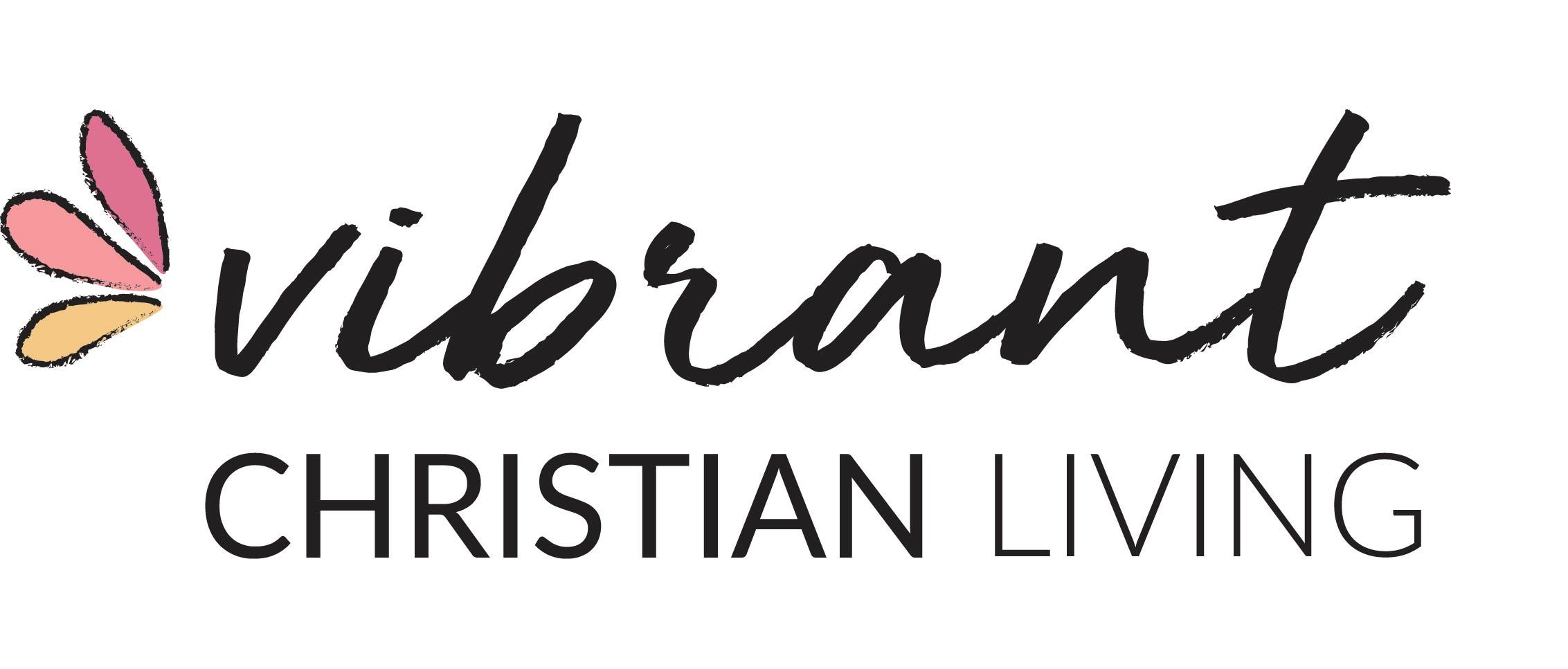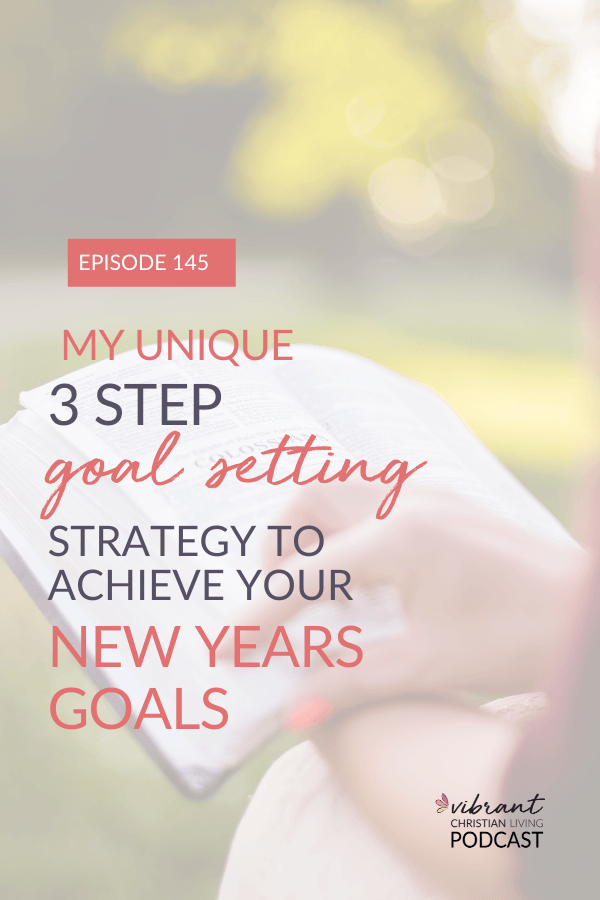Looking for a New Years goal setting strategy that sets you up to actually achieve them? This episode is part two in a three-part series on goal setting and creating a mindset that is going to support us in the changes we want to make in the new year.
Today we’re talking about how to set goals that are effective but that also capitalize on creating the right mindset behind the goal so we can be successful. I’m giving you the inside scoop into a goal setting workshop I offer, and I share more about the brain science behind renewing our minds for the new year.
WHAT YOU'LL LEARN:
- [0:19] A review of part one in this three-part series on goal setting and mindset
- [0:52] Inside scoop on my goal setting workshop
- [2:31] The five Ws and H of goal setting
- [6:02] Goal setting step 1: Looking back
- [7:29] Goal setting step 2: Looking around
- [13:13] Goal setting step 3: Looking ahead
- [15:54] Keeping goals manageable, light, and fun
- [20:05] A preview of part three in this three-part series on achieving your New Years goals
[0:19] A review of part one in this three-part series on goal setting and mindset
In part one of this series, we talked about how effective goal setting is not just about deciding you want to change. We have to understand the root behind that change, the thought process that has been driving the previous change, and what needs to be changed in order to create a different thought process to get the results that we want.
[0:52] Inside scoop on my goal setting workshop
This week we’re talking about the “meat and potatoes” of goal setting. How do we set a goal that is going to be effective, that also capitalizes on using the right thought process behind the goal in order to be successful?
So I’m giving you an inside scoop into a goal setting workshop that I offer on demand. It’s great to go through any time of the year, but of course it is most popular this time of year. In the workshop, I lead participants through an hour-long session on creating a goal for the new year or some kind of change in your life. We go through some very specific processes and steps in order to do that, and I’m sharing some of those steps with you today. If this is something you are interested in pursuing, you can join us for the goal setting workshop.
Along with the workshop, I offer a detailed workbook to follow along with me. So, I’m guiding you through, but you are following along and completing the exercises as we do it. You can do it on your time, and you can actually do it over and over, which I love to do as well. I go through this process several times a year myself, and I find it’s very helpful.
[2:31] The five Ws and H of goal setting
When we set goals, we need to answer the five Ws and H that relate to our specific goal setting scenario.
First, what outcomes do we want to achieve? What are the things we specifically want to have happen?
Second, why is the goal so important? Why does it matter? We talked a little bit about ‘why’ in episode 144, but really understanding why is an important goal to me.
Third, how do we want to achieve the outcome? What is it going to look like in order to make this happen?
Fourth, where and when will the goal take place? It’s important to have defined parameters so we know what is going to happen versus saying, “I’m going to do that someday.” It’s saying, we will start on this day, doing this action, for this long. I know I’m going to be successful when I have those parameters in place.
Lastly, who else will this goal affect? This is kind of an interesting question to consider, because we don’t think about this typically, but it can be a great question that boosts our why. When we understand that the goal not only affects us, and accomplishing it affects things like our relationships, our career, or even our job for God. This gives us that additional motivation to work toward our goals.
So those are the things we have to keep in the back of our mind as we engage in goal setting, in order to get this 360 degree view of our lives. We don’t want to just blindly make these different decisions, which is why I created the goal setting workshop. Whenever I’m helping clients create new goals, we talk about it from three perspectives:
- Looking back – seeing what was, and what happened in the past
- Looking around – seeing what is going on right now
- Looking ahead – envisioning what could be and what is possible
Having those three things in place allows us to create goals that are going to resonate, are appropriate, and will be effective. I use these steps when I’m working with clients, and I also regularly use them to check in with myself.
Today I want to give you a 30,000 foot view of what we cover in the workshop and how creating a goal strategy from those three perspectives can give us a sense of accomplishment in being able to make the changes that we want
[6:02] Goal setting step 1: Looking back
Step one is looking back. We look at what was, what worked, and what didn’t work. This allows us to celebrate our past victories as well as what God did. How did God show up? What were the good things that have happened? We need to take an honest, compassionate look at all of it. We don’t engage in blame, shame, or regret. Instead, we use that compassionate love that God has for us and say, “I understand that you’re not perfect. I’m not calling you to be perfect. I’m just calling you to sit with me as we walk through these things and let me help you go where you want to go.”
We should notice what is there, where there is room for growth, and decide what to do to move forward. We can consider what we want to learn from our victories and from what didn’t work. What kind of people do we want to show up as in order to get the victory we are seeking? What kind of people were we when we didn’t have that victory before? When we take an honest look at what happened in the past we can operate in a more full perspective as we move forward.
[7:29] Goal setting step 2: Looking around
Step two is looking around. This is where we see what is going on right now, and we determine what we want to change. We consider what is working versus what isn’t working. We see what depletes us and what energizes us. This is an incredibly important question, because goals that last need to be goals that energize us.
For example, several years ago I had a goal to begin working out regularly six days a week. I was able to accomplish that goal, but I found that it was depleting me. It wasn’t a joy to do it. I didn’t look forward to my workouts. So, I began to look around and realized it was working in the sense that I was able to tone my body the way I wanted in order to feel healthy, and to get the endorphins I needed for my mind. Those things were happening, but the way they were happening was depleting me and therefore it wasn’t working for me anymore. I needed to bring joy back to it. I needed to have joyful movement. I began to see that the action itself wasn’t helpful, even though the habit was. I could, however, switch the action itself to get more energy around it. So I’ve switched that and it has made a massive difference in my ability to show up.
There are times when we are starting something new where we just have to push through. If it is a constant feeling of drudgery, however, that is a sign that things may need to change. Within this step, we are also seeing what burdens we need to lay down, and what we are holding on to that isn’t ours to hold anymore. These are important to consider when figuring out where we want to go, because often a lot of our worries and fears are born out of us trying to control – and especially trying to hold onto those things that we have no control over. If we can look around and see how we are doing that, and what is really our responsibility, then we can let go of huge weights and focus on what is ours to change in a situation.
My husband and I recently walked through a season of unemployment, and during that time he was doing all that he could do to look for a job. My husband was interviewing regularly, and he has good interview skills. He was continually learning new things. He used all of his connections. Despite all of that, he regularly had to surrender to the fact that we did not know what the companies’ responses would be. We had no idea when they would say yes or why they wouldn’t say yes. We didn’t have control over that. So, we had to do our part and release the rest.
In setting goals, it is important to notice what part of the goal falls under our control, and what part isn’t. In addition, when we are looking around we need to notice what God may want us to change. What are the character traits or the habits that we feel Him working on and tugging at our hearts?
Right now, one that God is working on me in is generosity – not just financially, but also in my time, my ability to listen to people, and my ability to love others without judgment. That is a mindset I have to practice and the Lord reminds me of, but it was born out of some other issues I felt God wanted me to work through. Noticing what is there and what God may be prompting in our heart is huge.
We always want to make change based on what God has for us, because that is the goal for our lives. Our plans, as you know, don’t always work out and may not be the best, but His goals and His plans for us, that is ultimately behind everything that happens. It’s not this pressure to get it right, but rather an opportunity to begin to sense what God might want us to do and to approach all of it with curiosity.
[13:13] Goal setting step 3: Looking ahead
The third step is to look ahead at what could be. This is so fun, and this is the freeing part of this strategy. We have done the mental work of looking around and seeing what could change, and considering what happened in the past. Now we get to look at what God could do!
It has gotten easier for me to do this over the years. In episode 144 we talked about having a fixed mindset versus a growth mindset. I had a fixed mindset for a very long time, and I berated myself if I couldn’t figure something out. I avoided anything that seemed hard, because I was scared of failure. We need to free ourselves from that and operate from the standpoint of, “I am loved, I am enough, and God is going to take care of me. And if He leads me toward this, it’s going to be enough. I’m going to be able to do this.” We can step into a safe space where we are just dreaming. We are just imagining what could be, and what God could do in this. It doesn’t mean that He is going to do it right now or tomorrow, but we can think about the desires of our hearts that He has awakened in us.
No matter what, at the end of the day we are not going to accomplish anything without dreaming first. We have to imagine what could be. We do a practice called creating a “dream bank” inside of the goal setting strategy where we list ideas of what could be in each of these different categories of life. This is such a fun process because we always find out new things about ourselves. I often find things I had forgotten about that were important to me, or that I wanted to try, explore, or discover. Sometimes God brings something up that is new, and I can see how it has grown out of something else I have tried.
[15:54] Keeping goals manageable, light, and fun
The Dream Bank activity isn’t meant to put pressure on ourselves. The purpose is to see what is in our minds, which is really freeing and fun. We can then look at the dream bank and begin to narrow it down to one or maybe two of those dreams that we want to bring in and welcome. There shouldn’t be any heaviness around having to do these things, and nothing needs to be figured out instantly. We can, though, start to think about the very first thing we would have to do. This is done with an attitude of prayer, and then we begin to prepare ourselves mentally for what to do in order to make the goal happen. What physical tools will we need? What can we do mentally to make this light and fun? What can we do to loosen up our expectations around success?How can we celebrate small wins?
In her book How to Change, behavioral scientist Katy Milkman describes ‘temptation bundling’. She talks about how we can take those new habits we are trying to create and bundle them with something fun to make it more enjoyable and more likely for us to do it. I don’t want to go into too much detail here because we are going to talk about that more in the next episode (the conclusion of this three-part series). We are going to identify some brain hacks that we can use in order to cultivate new habits. This is all part of making it fun, light, and easy.
We need to consider whether we have mindsets that are getting in the way. Does it feel scary? We need to address those and see what we can do to work through them. In addition, we need to think about the physical tools we will need. Will we need to sign up for a class, or talk to a specific person? We need to put these things on our calendars and take the first step to get started. We can commit to taking certain steps by a certain date, or maybe we need to find an accountability partner.
So these are the three steps that I love to lead ladies through, and this is also a process that I personally take several times a year for myself to ask God what is next in my life. It’s the perfect process for those of us who can feel like we have no idea what God may be calling us to do in this next season or this next year. It’s a great workshop, and I would love for you to be a part of it.
Sign up for the Goal Setting Workshop whenever it works for you, and you can watch it on demand. There is a workbook that goes along with it that guides you through the process, and you’re going to get a lot out of this investment in yourself. So much can come out of moving forward with confidence!
[20:05] A preview of part three in this three-part series on achieving your New Years goals
Next week we are going to continue and finalize our discussion on goal setting for the new year. Specifically, we will be talking about habits and the brain hacks to make these changes happen.
OTHER PODCAST EPISODES ON GOAL SETTING:
- Ep 24: A Simple Plan for Life Balance, Purpose & A Better Life (The Vibrant Christian Living Framework)
- Ep 47: Dreaming Big: What Do You Want 2020 to Look Like?
- Ep 88: 5 Soul Care Gifts to Give Yourself This Year Pt 5: Prioritize Core Values
- Ep 124: Trusting God As We Follow God-Sized Dreams with Rachel Swanson
- Ep 144: Creating New Mindsets for Fresh Starts + New Beginnings in the New Year
Please Subscribe to the Podcast + Leave a Podcast Review
- First, please subscribe to the Vibrant Christian Living Podcast in your favorite podcast player (subscribe here on Apple Podcasts or follow on Spotify),
- leave a review (5 stars if you loved it) and comment HERE.
FREE WORKSHOP: Learn How to Transform Your Thoughts to Transform Your Life
Do you find it hard to let go of worry? Struggle with feeling you’re never enough?
Or maybe you’re frustrated because you can’t make the changes you want in your life (lose the weight, start new habits or grow in a certain area)?
Both brain science AND scripture show that every action we take starts first with a thought. If we change our thoughts, we can change our results.
That’s why I want to give you the inside scoop on the most effective ways to change our thoughts at this FREE WORKSHOP!
Sign up now at VibrantChristianLiving.com/mind

At this FREE WORKSHOP you’ll learn:
- Why it makes sense you’re stuck in toxic thought patterns
- The truth behind 3 popular myths on how to overcome negative thoughts
- A simple 3-step strategy to manage negative thoughts in-the-moment (this powerful tool alone is worth coming!)
Plus you’ll get an inside look at the Christian Mindset Makeover™–the only course that equips Christian women with powerful brain-science + biblically based tools to break free from negative thoughts—in only 9 weeks!
Go now to VibrantChristianLiving.com/mind right now to sign up for this amazing FREE WORKSHOP to learn how to transform your thoughts to transform your life.


